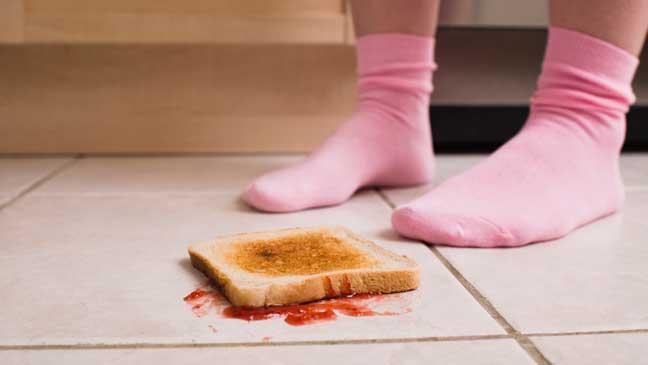
There are many people around the world that swear by the ‘five-second rule’, an urban myth that says virtually any food dropped on the floor is safe from germs for up to five seconds. Presumably, the bacteria’s tiny feet need at least this as much time to reach their prey.
It’s not clear who started this superstition. Some say the great Genghis Khan himself started it after he declared the 12 to 20 hour rule for eating food from the ground. It turned into five seconds pretty fast.
While researching the five-second rule, I came about a 2003 survey conducted at the University of Illinois which concluded 70 percent of women and 56 percent of men had knowledge of this superstition. This tells me that potentially millions of people might take this literally. That’s bad because not one but quite a couple of studies have shown time and time again why the five-second rule is simply untrue.
The most recent study to tackle the myth was published in the journal Applied and Environmental Microbiology by Professor Donald W. Schaffner and colleagues at Rutgers University in New Jersey. The team tested four surfaces (stainless steel, ceramic tile, wood and carpet), against four types of foods (cut watermelon, bread, buttered bread and strawberry gummy candy) which were dropped from a distance of five inches and left on the ground for either less than a second, five, 30, and 300 seconds. This led to a total of 128 possible combinations of floor surface, type of food and time.
To spice things up, the different floor surfaces were sprayed with a bacterium related to salmonella.
In the end, after about 2,560 measurements were completed, the researchers found the five-second rule can be debunked since even a fraction of a second is enough for bacteria to colonize your butter toast. There’s a half-truth linked to it, though. The researchers found the longer the food was in contact with the floor, the more bacteria were transferred.
What’s most interesting, perhaps, is that the time food spent on the floor wasn’t the most important factor for bacterial colonization. Rather, a combination of type of food and surface were far more important.
“The risk of illness resulting from deciding to consume food that has fallen on the floor will depend on factors including prevalence, concentration and type of organism; the nature of the food (especially moisture); the nature of the surface; as well as the length of time the food is in contact with the surface,” the researchers wrote in their paper.
For instance, watermelon, being juicy and moist, drew the highest rate of contamination and the gummy candy the least. As for the floor, carpet surprisingly had the lowest rate of bacterial transfer when compared to tile and stainless steel.
“I will tell you on the record that I’ve eaten food off the floor,” Schaffer told the New York times.“If I were to drop a piece of watermelon on my relatively clean kitchen floor, I’m telling you, man, it’s going in the compost,” he added.






